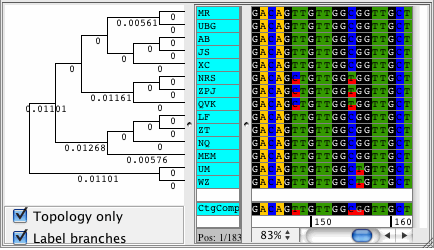Note: this was originally in my post about the application of phylogenetics in language, but several people pointed out that it should really be its own post.
Evolutionary biology has been revolutionized over the last ~
40 years by
phylogenetics, a way of using information about the traits of organisms to figure out how they are related to each other (
explanation here). This tool has yielded an immense amount of knowledge about how different groups of species are
related to each other,
when they diverged from each other, and which
traits are likely important in the evolution of a given group. Basically, the idea is that species that are more similar to each other are likely more closely related, based on the assumption that species descend from other species, and gain modifications along the way (that is, that evolution is real).
Phylogeneticists (in their
earlier form called cladists) would measure and score traits like producing milk, having fur, and producing body heat, and show quantitatively that there is a group (mammals) that all come from a common ancestor that had these traits. This is based on the assumption that the simplest explanation for the distribution of these traits is the one that involves the fewest changes across the tree, and that the simplest explanation is the best. So the simpler explanation for the distribution of the traits of milk, fur and body heat across animals is that the ancestor of all mammals had all these traits and passed them on to its descendants, instead of these traits evolving independently many times. Phylogeneticists had to deal with difficulties like the fact that birds also produce body heat (
convergence), but by carefully scoring information about traits, they could tell us that
whales are not fish and bats aren't bugs.
 |
Things got substantially more intense
Photo: codoncode |
Of course, phylogenetics has become
increasingly complicated since those early days. Now, instead of treating all traits as equal, evolutionary biologists build models for how likely different traits are to change. We count the likelihood of evolutionary shifts between species instead of just the number of traits they have in common, because fur color is more likely to change than heart structure. Another major change is that biologists now look at DNA and Protein sequence for most of their data instead of looking at traits like bone structure or number of toes. Our models and methods have become significantly more sophisticated, and phylogenetics is now a relatively old and mature field.



No comments:
Post a Comment